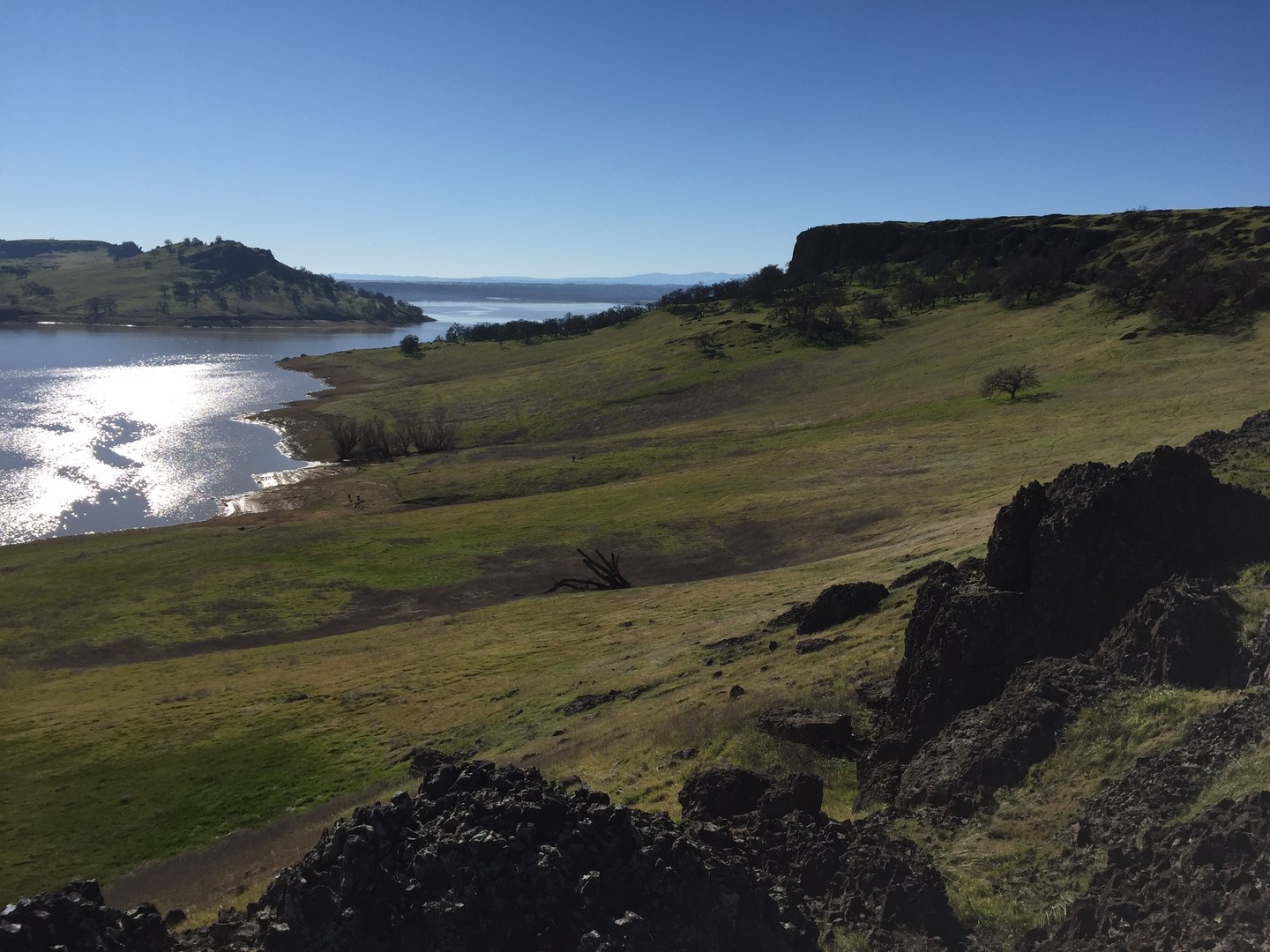The Orland Buttes are a small collection of hills with a volcanic past on the west side of the Sacramento Valley. There have been studies linking the basalt that forms these buttes to the beginning of the Yellowstone Hot Spot. The Orland Buttes are exposed bits of the Lovejoy basalt formation (along with Table Mountain in Oroville and the Bear Hole area in Bidwell Park, Chico). The origin of this basalt was from eruptions near Susanville, California, that occurred around the same time the Yellowstone Hotspot was beginning it's run near the Oregon and Nevada border.
Black Butte is highest point in the Orland Buttes that is publicly accessible. Although the peak is not incredibly prominent, its location along the rim of the Sacramento Valley will provide for expansive views on clear days. The low elevation of this hike along with emerald green grass makes this an appealing hike in winter. Springtime brings carpets of wildflowers between the mounds of basalt.
To begin this hike, park at the free Observation Point lot just south of Black Butte Lake's dam. Other parking lots in this recreational area managed by the Army Corps of Engineers do have fees. Continue across the dam and turn left at the junction for the Osprey Trail (about three-quarters of a mile in). As you gently rise above Black Butte Lake, bear left after 1.7 miles to start ascending Black Butte. A faint use trail slowly turns into an easy cross-country route toward the high point.
Once you finish enjoying the views and interesting rock formations on top of Black Butte, you can either return the way you came or continue west along Black Butte Lake to connect to a wider network of trails. Additionally, you can turn this hike into a loop by dropping down to the rocky shores of Black Butte Lake while heading east back toward the dam. An interesting U-shaped overflow channel with a short ladder will connect you to the beginning of the Osprey Trail.

























Comments
Sign In and share them.